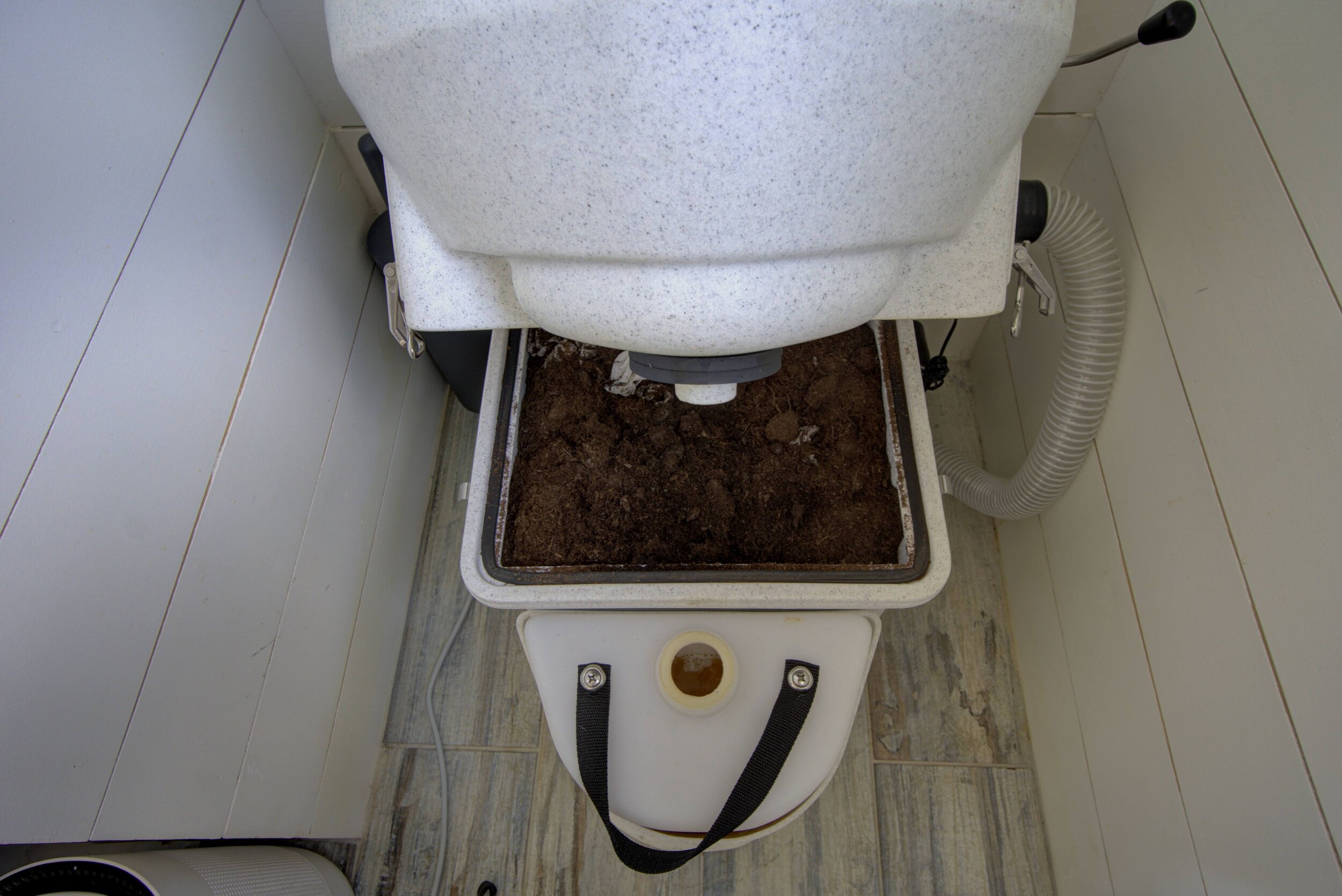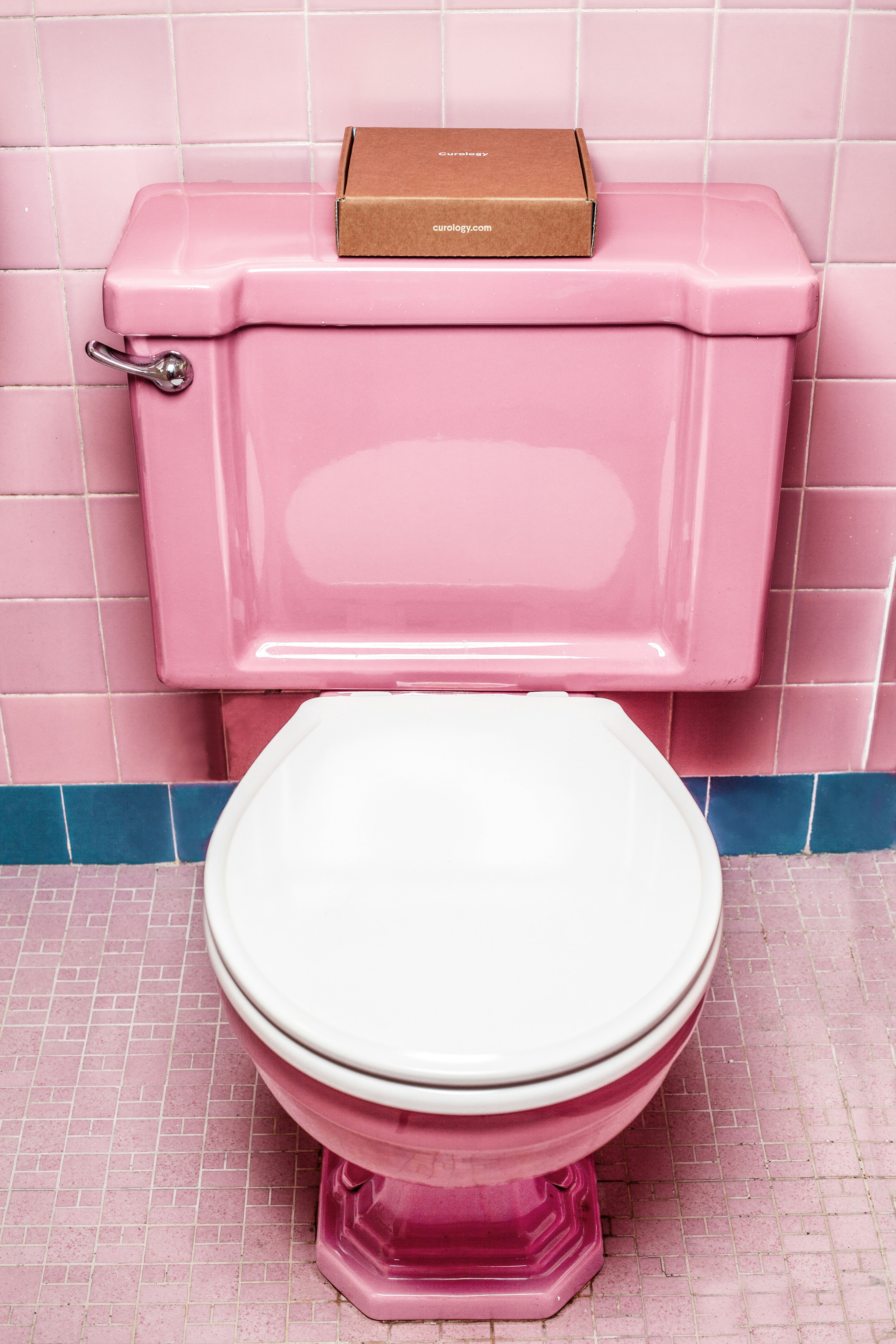During your camping trip, you might encounter a full composting toilet and wonder, “How Do You Empty A Composting Toilet?” In this guide, we will walk you through the process step by step.
From understanding the fundamentals of composting toilets to learning the proper disposal methods, we’ve got you covered.
This article ensures that you have all the information to handle this task hygienically and efficiently. Let’s unfold the mystery and learn how to empty a composting toilet with ease during your outdoor adventures!

What is a composting toilet?
A composting toilet is a type of toilet system that processes human waste into compost through a natural decomposition process. Unlike traditional flush toilets, composting toilets do not use water to transport waste, making them more environmentally friendly and sustainable.
These toilets are often used in remote areas or off-grid locations where a connection to a sewage system is not feasible.
Overview
Composting toilets are designed to mimic the natural decomposition process that occurs in nature. When human waste enters the toilet, it combines with organic material, such as sawdust or peat moss, to create a nutrient-rich compost. This compost can then be safely used as fertilizer for gardens or other non-edible plants.
Benefits
Using a composting toilet offers several benefits. Firstly, it helps to conserve water since there is no need for flushing. This can be especially advantageous in regions experiencing water scarcity.
Additionally, composting toilets reduce the strain on sewage systems and decrease the amount of waste ending up in water treatment facilities. They also allow for easy waste disposal in remote locations, minimizing the need for costly and complicated sewage infrastructure.
Understanding the composting process
How does a composting toilet work?
Composting toilets utilize a process called aerobic decomposition to break down waste. The process relies on bacteria and other microorganisms that thrive in an oxygen-rich environment.
These microorganisms break down the waste, transforming it into compost. The key to this process is maintaining the right balance of moisture, oxygen, and temperature within the toilet system.
Types of composting toilets
There are several different types of composting toilets available, each with its own advantages and disadvantages. Self-contained composting toilets are the most common type and are designed to separate liquids from solids.
They typically have separate compartments for urine and solid waste. Other types include central composting units, which serve multiple toilets in a building, and batch composting toilets, where waste is collected and processed in batches.
When is it time to empty a composting toilet?
Factors affecting emptying frequency
The frequency at which a composting toilet needs to be emptied depends on various factors, including the size of the toilet system, the number of users, and the usage patterns.
Generally, a composting toilet should be emptied when the composting chamber is around 70-80% full. However, this may vary depending on the specific design and capacity of the toilet.
Indicators that it needs emptying
There are several indicators that may suggest a composting toilet needs to be emptied. These include a strong odor, a buildup of solid waste in the toilet chamber, or a significant increase in the time it takes for the compost to decompose. Regular monitoring and observation of the composting toilet will help identify when it is time for emptying.
Preparing to empty a composting toilet
Gather necessary materials
Before emptying a composting toilet, it is important to gather the necessary materials to ensure a safe and efficient process. This may include gloves, a respirator, a shovel or scoop, a garbage bag or composting container, and any additional cleaning supplies.
Safety precautions
Emptying a composting toilet should be done with caution to minimize any potential health risks. It is important to wear appropriate protective gear, such as gloves and a respirator, to prevent contact with waste material.
Additionally, good hygiene practices, such as washing hands thoroughly after handling waste, should be followed to maintain personal cleanliness and prevent the spread of bacteria.Emptying a composting toilet
Step-by-step process
Emptying a composting toilet typically involves the following steps:
- Turn off any ventilation fans or systems connected to the toilet.
- Remove the composting chamber or access panel, following the manufacturer’s instructions.
- Use a shovel or scoop to carefully transfer the compost into a garbage bag or composting container.
- Seal the bag or container securely to minimize odors.
- Clean the composting chamber or access panel thoroughly.
- Reinstall the chamber or panel and turn on any ventilation systems.
Disposing of waste
The compost generated from a composting toilet can be safely used as fertilizer for non-edible plants or disposed of in a designated waste disposal site. Care should be taken to ensure compliance with local regulations regarding waste disposal.
If using the compost for fertilization, it is essential to let it mature for a sufficient period to ensure that any potential pathogens have been fully neutralized.
Cleaning the composting bin
After emptying the composting toilet, it is important to clean the composting bin to maintain proper hygiene. This can be done by using hot water and a mild detergent.
Avoid using harsh chemicals or bleach, as they can negatively affect the bacterial balance necessary for the composting process. Rinse the bin thoroughly and allow it to dry completely before reusing it.
Maintaining and troubleshooting a composting toilet
Regular maintenance tasks
To ensure the proper functioning of a composting toilet, regular maintenance tasks should be performed. These may include adding bulking material, such as sawdust or peat moss, to the toilet after each use to aid in decomposition and reduce odor.
It is also important to monitor the moisture levels within the composting chamber and adjust as necessary to maintain optimal conditions for decomposition.
Common problems and solutions
Composting toilets may occasionally encounter issues that can affect their performance. Common problems include excessive odor, slow decomposition, or the presence of flies or other pests.
These issues can often be resolved by adjusting the moisture levels, increasing the amount of bulking material, or ensuring proper ventilation. In some cases, seeking assistance from a professional composting toilet technician may be necessary to resolve more complex problems.

Alternative options for waste disposal
Humanure composting
Humanure composting is a specific method of composting human waste for use as fertilizer. This process typically involves collecting waste in a separate container or compost bin and allowing it to decompose over time. Humanure composting requires careful management and monitoring to ensure proper hygiene and prevent the spread of pathogens.
Composting toilets with external composting units
Some composting toilets are designed with external composting units, also known as remote composting chambers. These units are located away from the main toilet and contain the composting process. This design allows for easier maintenance and emptying of the compost, as the unit can be accessed separately from the toilet.
Commercial waste disposal facilities
For those who do not wish to manage waste themselves, commercial waste disposal facilities provide an alternative option. These facilities are equipped to handle and process human waste in a safe and environmentally friendly manner.
They may use various methods, such as composting or anaerobic digestion, to treat and dispose of the waste.
Composting toilet tips and considerations
Proper usage techniques
To ensure optimal performance of a composting toilet, it is important to follow proper usage techniques. This includes using the appropriate amount of bulking material after each use to aid in decomposition and reduce odors.
It is also essential to avoid disposing of any non-biodegradable materials, such as plastic or sanitary products, in the composting toilet.
Dealing with odor
Composting toilets may produce odors if not managed properly. To minimize odors, it is important to maintain the right balance of moisture, ventilation, and bulking material within the toilet system.
Regularly adding bulking material and ensuring proper ventilation will help control odors. Additionally, incorporating odor-reducing agents or installing odor filters can further improve the user experience.
Environmental factors
When installing a composting toilet, it is important to consider environmental factors that may influence its performance. Temperature, humidity, and airflow can all affect the composting process.
Placement of the composting toilet in a location that allows for proper ventilation and avoids extreme temperature fluctuations can help ensure successful decomposition and reduce the risk of odor issues.
Legal and regulatory aspects
Local regulations
Before installing or using a composting toilet, it is crucial to understand and comply with local regulations regarding their use. Some areas may have specific guidelines or restrictions in place, which could include requirements for proper waste disposal or permitting processes. It is essential to research and adhere to these regulations to avoid any legal consequences or health hazards.
Permit requirements
Certain jurisdictions may require permits for the installation or use of composting toilets. These permits may involve inspections to ensure compliance with health and safety standards. It is important to check with local authorities and obtain any necessary permits before installing or operating a composting toilet to ensure legal compliance.
You may also read: Can You Eat Dirt To Survive?/Benefits Of Drying Clothes In The Sun
Conclusion
Composting toilets offer an environmentally friendly and sustainable solution for waste management, particularly in areas without access to sewage infrastructure.
By understanding the composting process, knowing when to empty a composting toilet, and following proper maintenance and troubleshooting techniques, you can ensure the efficient and effective operation of your composting toilet system.
Additionally, considering alternative options for waste disposal and taking into account legal and regulatory aspects will contribute to a successful and compliant composting toilet experience. With proper care and attention, a composting toilet can provide an eco-friendly and convenient solution for waste management.
